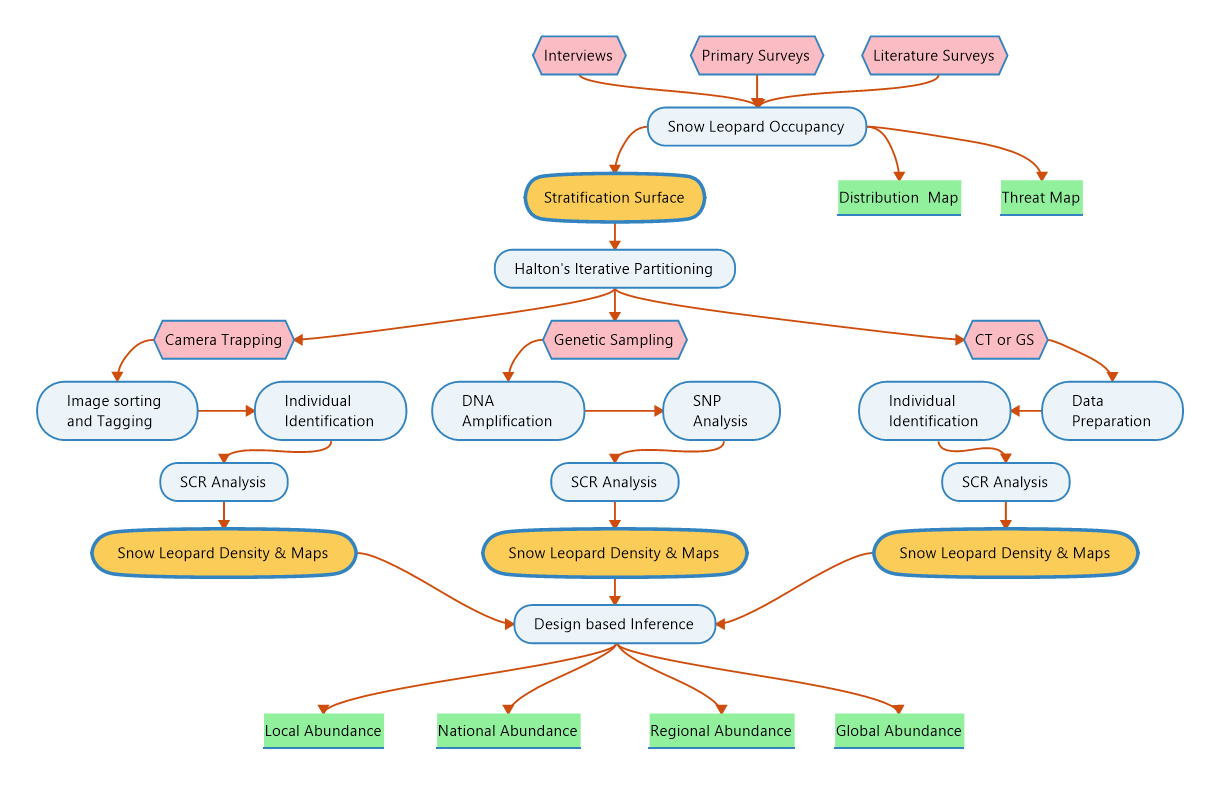The PAWS Process
Our approach to estimating snow leopard populations
To achieve the main objective of PAWS – arriving at a reliable snow leopard population estimate – a two-stage process has been identified by the technical and oversight panel that was set up by the GSLEP Steering Committee.
These two stages involve various activities including training and capacity building workshops, periodic interaction with specialists supervising the effort, fundraising, procurement of equipment, field surveys, analysis of data, and setting up of national and regional leads and partner organizations.
The PAWS Scientific Advisory Panel has provided guidance on the optimal sampling design for distribution and abundance surveys using interviews, primary surveys, camera trapping and genetic sampling that will soon be made available on the GSLEP website. A continuous review and feedback mechanism is built to facilitate course correction and adaptive improvement of sampling coverage.
The primary two stages, as identified by the technical oversight panel are:
1. Assessing snow leopard distribution as a function of one or more habitat covariates (Marco)
- Method(s): Site occupancy modeling
- Data required: Interview, sign survey and camera trapping
- Sampling unit: 225 sq km grid cells (15km x 15 km) that can potentially be represented through a specific sampling effort
- Workshop needs: Up to five workshops focused on planning, designing, field training, pilot surveys feedback, and analysis
- HR needs: Field teams to collect data in the field, research support to coordinate and monitor design, implementation and analysis
- Indicative Timelines: For each survey, 1 month for planning and logistics, 1 month for pilot data collection, 15 days for pilot data analysis, 1-2 months for main data collection, 1-2 months for analysis across a study area covering 10,000-50,000 sq km
- Outcomes: A surface denoting probability of site use by snow leopards
- Resources: Explore toolkits that outline the methodological approaches
2. Estimating abundance as a function of heterogeneous density across space (Micro)
- Method(s): Spatial Capture Recapture modeling
- Data required: Camera trapping or genetic sampling
- Sampling unit: 500-5000 sq km of a coverage with clusters of camera traps or genetic sampling transects
- Workshop needs: Up to six workshops focused on planning, field training, data collection and organization, analysis, feedback and course correction, and stratification and selection of sites
- HR needs: Field teams to install cameras or collect genetic data in the field, research support to coordinate and monitor design, implementation and analysis
- Indicative Timelines: For each survey, 1 month for planning and logistics, 1 month for setting up cameras or collect genetic data, 2 months for data collection and organization (after at least 3 3 months of field data collection in case of camera traps), and 2 months for analysis. The intensive sampling may need to be repeated in several sites depending on the stratification (stage1), representation and desired level of precision
- Outcomes: Snow leopard density and abundance estimates
- Resources: Explore toolkits that outline the methodological approaches
The PAWS workflow



